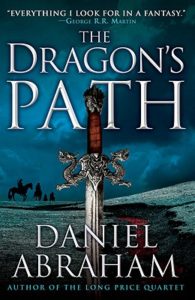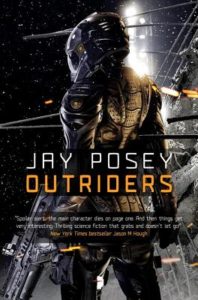There’s a pretty common joke that goes through the creative community every few months. The basic idea is that a developer offers to pay an artist in Exposure Dollars, and the artist goes off and spends those Exposure Dollars on hot cars and penthouse apartments and diamond earrings. The point being that you can’t spend exposure. There is *some* value to exposure, since the biggest danger to most artists isn’t piracy or writer’s block or the cost of materials. It’s obscurity. But developers tend to overvalue their exposure, and really only artists get asked to do their job for free on a regular basis. It’s kind of nuts.
There’s a similar problem in publishing: the currency of dreams. That is to say, aspiring writers (and a lot of readers) put a lot of value on publication itself that subsequently undervalues the financial benefits of publication. Let me broadly lay out how this works.
First off, publishing is a business. Duh. Just like any other business, there is supply, there is demand, and there is some service that sits between those two that can be monetized. Diamonds are worthless rocks until they’re dug out of the ground, cut by someone who has dedicated their life to the craft, and then sold to consumers. Also, they remain worthless cut rocks until someone on the consumer end agrees to pay some amount of money for them. It’s a fairly simple model.
Publishing is no different. Writers, editors, printers, marketers, distributors and booksellers all have a hand in moving the product from the mine to the consumer, and all of them get paid something for their tasks. Most of those costs (the editor’s salary, the printer’s run, the paper costs) are fixed. The writer’s cost is not. We get royalties, and advances against those royalties. In some ways we’re the ones who have the most to gain from a book doing well, but we’re also the ones who lose the most when a book fails. That’s both good and bad, but for the purposes of this post it’s just a fact.
Now, demand for books fluctuates. There are only so many readers out there, and they only buy so many books in a given month. There are spikes, but that’s usually attributable to one-off events like the next Harry Potter book or celebrity tell-all, but for those of us in the middle, demand averages out to a constant (honestly pitiful) medium.
Let’s be clear about this. Demand is wavering. People are reading fewer books, not more. Borders has failed (for a variety of reasons) and B&N is struggling. Yes, indies are doing better than they were, but every day I get a newsletter that covers the world of publishing, and every week another bookstore closes, or goes up for sale, or launches a GoFundMe campaign because they can’t pay their bills. And sometimes a new store opens, often by someone with no bookselling experience who is “fulfilling a lifelong dream”. Dreams don’t pay the rent.
There’s also something to be said about what Amazon is doing to this process. They’re kind of the Walmart of the bookselling world, dictating prices and opening revenue streams, all while pocketing a cut. Maybe I’ll write a fuller post about that later. For now, just know that they’ve disrupted an already unstable system, and the key beneficiary is Amazon itself.
On the other hand, supply is nearly limitless. There are considerably more aspiring writers with a basic grasp of storytelling, grammar and plotting then there are publishing spots in a given year. The people responsible for moving a writer from aspiring to published (that is to say, the publishers) are flooded with applicants for the job. And a lot of those applicants place an enormous amount of value on making that transition, so much that they are willing to overlook the other aspects of the deal.
I know this because I was one of them. Only publication mattered to me. Once I was published, everything else in my life would be fine. That was the dream, that was the hope, that was the belief. Get published, and joy would follow.
Of course, once I was published I realized how hollow that was. The very mechanisms that drove me to that point were evolved to discard the majority of writers who get published. The thing that mattered wasn’t that first book, but the second, and the third, and the tenth. Staying on store shelves becomes extremely difficult when hundreds of new books come out each month. Bookstores don’t add shelf space. They discard books that have only been there for a few months.
So how does this work at all? How has publishing not simply collapsed in on itself? Simple. Publishers understand all of this. They have to, it’s their job, and they’re just as at risk of failure as all those booksellers. The basic structure of most houses is to put out as many books as is economically feasible, discover which ones readers truly love, and then double down on those authors. It’s incredibly difficult, perhaps impossible, to figure out what readers will want. That’s why there are all these stories about famous authors submitting their book anonymously to editors and receiving countless rejections, or books that couldn’t find a publisher for years finally breaking through and going on to sell a million copies. It’s also why you get success stories in the world of self-publishing.
For the authors whose books make it through the bedlam, catch the eye of a sufficient number of readers, achieve the escape velocity of word of mouth, it’s possible to make a living.
And for the legions of writers whose books appear and disappear without a splash? Well. Fortunately you can spend those dreams on food. Just like exposure.

